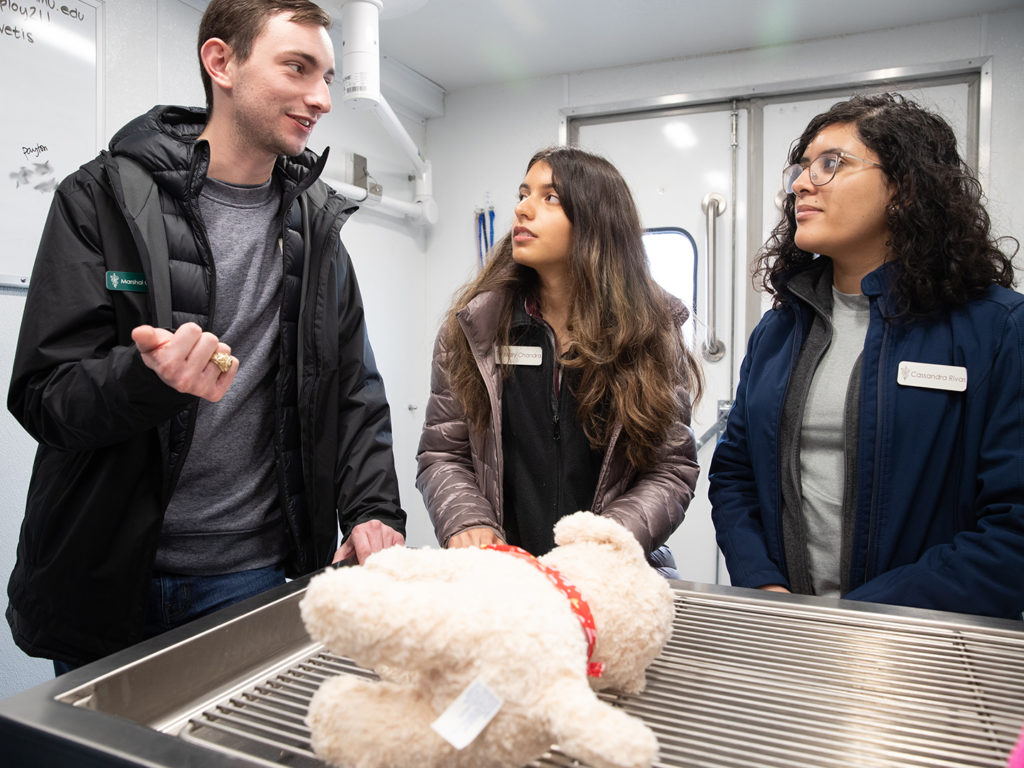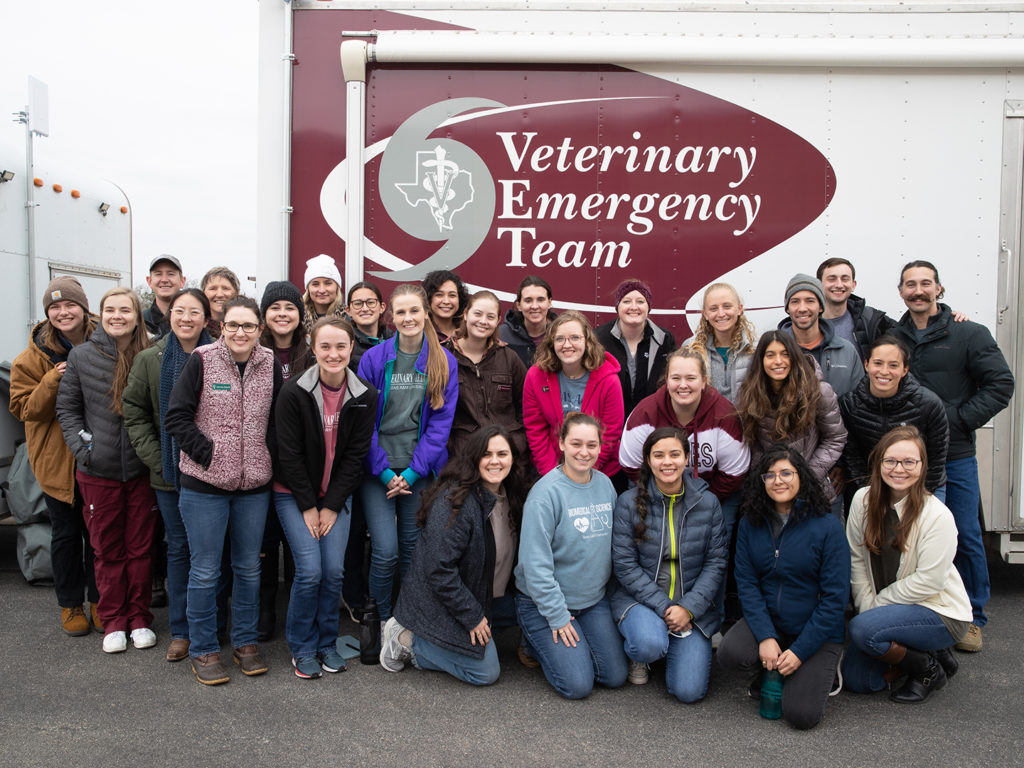Texas A&M Veterinary Students Practice Disaster Response At Annual Disaster Day
Story by Aubrey Bloom, CVMBS Communications

Battling a fake wildfire and the real cold, 50 Texas A&M College of Veterinary Medicine & Biomedical Sciences (CVMBS) students, staff, and faculty practiced caring for animals in emergency situtions during the 14th annual Disaster Day on Feb. 25.
After the 2021 event was moved online due to the COVID-19 pandemic, this year’s in-person exercise at the Texas A&M Engineering Extension Service’s (TEEX) Disaster City included more than 750 students from several Texas A&M colleges.
Student actors, complete with makeup to simulate injuries, were given victim roles that require responses from the various participating groups. Some also had pets, played by stuffed animals, that needed treatment for a variety of injuries.
In addition to the veterinary students, this year’s exercise included students from the Texas A&M colleges of nursing, medicine, and pharmacy; the School of Public Health; as well as students in the Department of Psychological and Brain Sciences, athletic trainers, and members of the Corps of Cadets.
Most of the veterinary student participants were members of the Student Veterinary Response Team (SVRT) in their first three years of veterinary school. Danielle Johnson, the third-year SVRT representative, worked with the students from the other disciplines to plan the exercise.
“It’s a big undertaking,” she said. “We’ve been planning it for two semesters. It’s interesting to work with the other disciplines and see how we can all work together. It’s fun, but it’s definitely stressful.”
The veterinary response part of the exercise utilized mobile medical platforms and the disaster response experience of the Veterinary Emergency Team (VET) to make the cases as realistic as possible. The medical platforms also allowed the students to work in a controlled environment on a day where the temperature never got above 40 degrees.

This year’s simulated disaster was a wildfire, which is a scenario the VET has actually responded to multiple times. The simulated cases range from burns and smoke inhalation to underlying medical problems that could be worsened by the stress and anxiety of the situation.
Johnson said the experience was valuable for veterinary students who hope to one day be able to assist their communities when disaster strikes.
“If you’re interested in helping your community in a disaster, you have to know how to work within the system. This is a good place to practice that,” she said. “I feel like if I were to get deployed to a real disaster, I’d have a much better idea of how to work within the response system.”
Fourth-year students on the VET clinical rotation learn even more about the protocols for disaster response, which is why students like Eli Hernandez served as team leaders, guiding the SVRT students through the process.
“Our role is in facilitating the discussions and taking the knowledge we’ve learned on this rotation to help the first through third years follow the path of how to manage these cases when you have limited resources and limited space,” he said.
Hernandez said one of the priorities is to help students understand the importance of good medical records in disaster scenarios.
“That’s a big part of the teaching out here for students who haven’t done an exercise before,” he said. “Even though it’s a disaster situation and almost all of the cases are emergency cases, you still have to record everything that you’ve done. All of that important information is still required.”
Both Hernandez and Johnson said it was a valuable experience, and encouraged students to take part in the next year’s Disaster Day.
“I had some anxiety about it, especially leading a team, because I didn’t come out and do this my earlier years,” Hernandez said. “But it’s been a really good time. It’s really good information to know because there’s much more to it than just learning how to treat small animal cases.”
###
For more information about the Texas A&M College of Veterinary Medicine & Biomedical Sciences, please visit our website at vetmed.tamu.edu or join us on Facebook, Instagram, and Twitter.
Contact Information: Jennifer Gauntt, Director of VMBS Communications, Texas A&M College of Veterinary Medicine & Biomedical Sciences, jgauntt@cvm.tamu.edu, 979-862-4216


